The Great O'Malley

Brief Synopsis
Cast & Crew
William Dieterle
Pat O'brien
Sybil Jason
Humphrey Bogart
Ann Sheridan
Frieda Inescourt
Film Details
Technical Specs

Synopsis
Policeman James Aloysius O'Malley knows the law better than any other policeman. He is constantly issuing citations for obscure laws that are generally no longer enforced. For this reason, the people on his beat dislike him and his fellow police officers make fun of him, but O'Malley is convinced that the law is the law and must be enforced exactly as written, even if it causes trouble for otherwise law-abiding citizens. His mother encourages him to follow in his father's strict footsteps until he stops her from throwing breadcrumbs to the birds because that would be littering. O'Malley stops John Phillips for a noisy muffler, and even though Phillips agrees to fix it, begging O'Malley not to make him late for his job, O'Malley insists on writing him a ticket. Phillips, whose daughter Barbara is crippled, loses his job and is forced to pawn his army gun and war medals. When he cannot get the money he needs, he robs a store, but is quickly arrested by O'Malley, who stops him again for his noisy muffler. After Phillips is sent to prison, despite his lawyer's pleas for mercy, O'Malley is demoted to school crossing duty in hopes that he will learn to temper the law with human feeling. While working, he becomes friends with Barbara, not realizing that she is Phillip's daughter. When he learns her identity, he is guilt-stricken and secretly arranges for Barbara's leg to be fixed, secures Phillips' release from prison and convinces his former employer to rehire him. Not knowing of O'Malley's efforts, Phillips expects to be hounded by the policeman. When O'Malley appears at the Phillips' door, Phillips shoots him in a panic. Then when he learns the truth, he offers his own blood for an emergency transfusion to O'Malley. O'Malley recovers and returns to his old beat, but this time, he is more reasonable. He becomes popular with the neighbors, and Judy Nolan, Barbara's teacher, falls in love with him.

Director
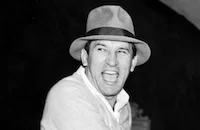
William Dieterle
Cast
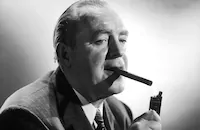
Pat O'brien

Sybil Jason

Humphrey Bogart
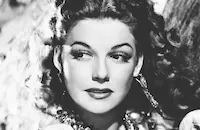
Ann Sheridan

Frieda Inescourt
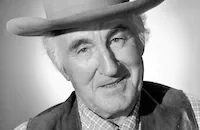
Donald Crisp
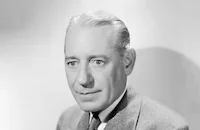
Henry O'neill

Craig Reynolds
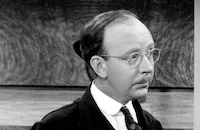
Hobart Cavanaugh
Gordon Hart
Mary Gordon
Mabel Colcord
Frank Sheridan
Lillian Harmer
Delmar Watson
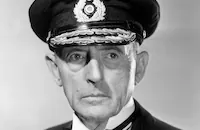
Frank Reicher
James Farley
Jack Gamel
George Bookasta
Basil Bookasta
Frank Lombardi
Armand "curly" Wright
George Humbert
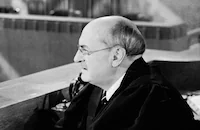
Granville Bates
Raymond Brown
Egon Brecher
Cliff Saum
Glen Cavender
Charles Wilson
W. H. Clauson
John Sheehan
Edward Gargan
Robert E. Homans
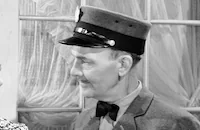
John Butler
Thomas Pogue
Thomas L. Brower
Jerry Mandy
Virginia Sanborne
Francesca Rotoli
Lottie Williams
Myrtle Stedman
Perc Teeple

Joseph Allen
Huey White
Stanley Fields
Bob Perry
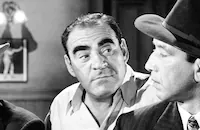
Ralph Dunn
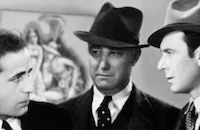
Jack Mower
Arthur Millett
Max Wagner
Georgie Billings
Leonard Kibrick
Crew
Milo Anderson
Harry Joe Brown
Leo F. Forbstein
Ernest Haller
Milton Krims
Warren Low
Mary Mccall Jr.
Seton I. Miller
Martin Mooney
Irving Rapper
Tom Reed
Hugh Reticker
Frank Shaw
Jack L. Warner

Film Details
Technical Specs

Articles
The Great O'Malley
Tagline for The Great O'Malley
From the ads, the 1937 police drama The Great O'Malley seems like a perfect pairing of Pat O'Brien, Warner Bros.' quintessential Hibernian hero, and Humphrey Bogart, one of the screen's greatest gangsters. Yet Bogart's role was far from the crazed gunman promised. He wasn't even a gangster (though the character had been in the story's 1925 silent version, The Making of O'Malley). He was just a desperate unemployed man driven to crime when a minor traffic violation costs him his first job in years.
The film brought Bogart his first star billing, in only his second year at Warner Bros., but when he made it in July 1936, his career seemed to be going nowhere. Part of his problem was the fact that studio head Jack L. Warner didn't like him. Not only did he consider the actor disrespectful and ungrateful, but he also resented having to hire him in the first place. Leslie Howard had refused to sign for the film version of his Broadway hit The Petrified Forest (1936) unless his friend Bogart got to repeat his stage role as a psychotic gangster. If others at Warner's hadn't seen the actor's potential, Warner would have continued offering him thankless roles like John Phillips in The Great O'Malley in hopes of goading the actor into walking out on his contract.
In this case, Bogart was forced to play second fiddle to child star Sybil Jason, Warner's attempt to cash in on the success of Shirley Temple at 20th Century-Fox. His casting as Jason's father seemed particularly improbable as the South African-born moppet had a pronounced British accent, as did Frieda Inescort, cast as her mother. The writers finally added a line to indicate the family had emigrated from Canada in search of work, which supposedly explained their dueling dialects.
Much as the actor may have hated his role in The Great O'Malley, he still made the most of it. The scene in which he turns to crime after unsuccessfully trying to pawn his World War I medals, a possible lift from the studio's I Am a Fugitive from a Chain Gang (1932), gave him his best material in the film, and Bogart seized the opportunity. Bogart's clash with the pawnbroker gives an inkling of the acting power he would display in later films like High Sierra (1941) and Casablanca (1942).
Even if Bogart was on the outs at the studio, that didn't stop him from standing up for himself and his fellow actors in the face of bullying from director William Dieterle who had been assigned to the film at the last minute (originally Michael Curtiz was to have directed). He sent an impassioned memo to production chief Hal Wallis demanding he be removed from the production on the grounds that he had been promised he would not have to direct any gangster films, his only producer would be Henry Blanke and all of his films would be billed as "William Dieterle Productions." The memo arrived while Wallis was out of town, however, and by the time he got it, production had started.
Early on, Dieterle demanded Jason remove a gold bracelet that all of the girls in her family wore during childhood. The child was upset because the bracelet would have to be cut off, and her sister and guardian tried to protest. When Dieterle insisted, Bogart growled, "For Christ's sake, Bill, the kid coulda gotten the damn bracelet from a dime store. Let her wear it!" Rather than give in, the director called Warner to argue his case to him, to no avail. The bracelet can be spotted throughout the film.
At another point, Bogart and Dieterle disagreed about how to play a minor scene in the film. As the argument escalated, and it became clear that the director was not going to back down, Bogart finally told him to just shoot the scene. Then when Dieterle cried "Action", the actor unzipped his pants and proceeded to urinate on camera. He then informed the director that he would continue to disrupt filming until he got to play the scene his way. Not surprisingly, the two would never work together again.
At least Bogart could console himself with his camaraderie with the rest of the cast, particularly Ann Sheridan, who didn't seem to have an enemy on the lot. Also, his career started looking up when Wallis and producer Robert Lord assigned him a leading role as a working man unwittingly drawn into the machinations of a Klan-like organization in Black Legion (1937). Although shot later, the film would be released before The Great O'Malley, which may account for Bogie's move to star billing.
Jason was less fortunate. Within a year Warner had decided that she was never going to be a serious threat to Temple (whose films he had forbidden her to watch), and he let her go. After two films opposite her former rival, she left the screen.
Producer: Harry Joe Brown
Director: William Dieterle
Screenplay: Milton Krims, Tom Reed
Based on the story "The Making of O'Malley" by Gerald Beaumont
Cinematography: Ernest Haller
Art Direction: Hugh Reticker
Music: Heinz Roemheld
Cast: Pat O'Brien (James Aloysius O'Malley), Sybil Jason (Barbara 'Babs' Phillips), Humphrey Bogart (John Phillips), Ann Sheridan (Judy Nolan), Frieda Inescort (Mrs. Phillips), Donald Crisp (Police Captain Cromwell), Henry O'Neill (Defense Attorney), Hobart Cavanaugh (Reporter Pinky), Mary Gordon (Mrs. O'Malley), Sonny Bupp (Boy With Lollipop).
BW-71m.
by Frank Miller
SOURCES:
Sybil Jason, My Fifteen Minutes

The Great O'Malley
Quotes
Trivia
Notes
The film's working title was The Making of O'Malley, which was also the title of the 1925 First National film which was also based on the Gerald Beaumont story (see AFI Catalog of Feature Films, 1921-30; F2.3352).

Miscellaneous Notes
Released in United States 1937
Released in United States 1937













